For many people, the art of fly fishing is all about the congress of nature and tranquility. It’s what brings most people into the fly fishing fold. We have a yearning for rocks, trees, water, and solitude. We often equate the activity of waving a long stick in the air, with standing in, or hiking along, a wild and secluded stream.
However, due to pesky circumstances in life (like a job) many of us live in urban areas surrounded by concrete and steel, far away from picturesque freestone streams. I live in Houston, Texas, the fourth largest city in the United States. It is massively urban. From my front door, a stereotypical “wild” trout stream is four hundred miles away, at least.
When I first moved to Houston, I resigned myself to the idea that fly fishing forays would only occur once or twice a year, and only after I had saved enough vacation time and money to travel. I convinced myself that the waterways in the Houston metro-area weren’t worth of fly fishing. This was despite the fact that Houston is surrounded by hundreds of miles of water. Rivers, bayous, lakes, swamps, streams, and cement-lined ditches all exist within the Bayou City’s metropolitan sprawl, and that’s just the freshwater. But the idea of fly fishing in any urban setting was anathema to me. I couldn’t look past the harsh geometric cityscape and see any desirable waterway worth plunking a fly into. Thankfully, I soon snapped out of my pity party and realized that my preconceived notion about urban waterways was wildly incorrect.
One sunny afternoon, I was riding my bike through a local city park. There was a narrow ditch, about three feet deep, that paralleled the bike trail. While I peddled along, I noticed several cormorants in the ditch. As I went by, I watched the birds dive under the water, each time emerging with a plump sunfish clasped between their hooked bills.
I squeezed the brakes on my bike handle and skidded to a stop. I stalked to the edge of the bank and watched in amazement as the cormorants dove down repeatedly, bringing up sunfish, some of which were quite large.
The cormorants weren’t too pleased with my snooping. Their guttural croaks signaled their irritation. Eventually they took flight, leaving the ditch in peace. After they were gone, I scanned the water and noticed a partially submerged culvert protruding into the ditch. If any sunfish had been lucky enough to escape the mortal jaws of the avian predators, they likely sought refuge here.
The next day, I biked back to the same ditch, but this time I had my 3-weight fly rod with me. This was my brook trout rod, and until then, it had been casually discarded in the corner of my closet, gathering a layer of dust.
I found the partially submerged culvert and eyed it eagerly while I rigged up. My fly selection consisted of trout flies, but I figured panfish weren’t too picky. I tied on a size 12 dry fly and made my first cast. My eyes grew wide as I watched a green sunfish abandoned its haven at the mouth of the culvert and swim over to the fly. The greenie pecked at the fly a couple of times, then without further delay, ate the whole thing.
The fish turned sharply and swam back for the culvert, pulling hard. Despite myself, I laughed aloud. The 3-weight pulsed hard with each run. Eventually the greenie gave up and was brought to hand.
Several more sunfish were caught from the meager ditch before I decided to call it a day. I was still smiling while I walked back to my bike. As I peddled home, it dawned on me; if there were healthy populations of fish in a tiny urban ditch like this one, how many other urban waterways also harbored fish?
Catching those ditch-dwelling sunfish was the catalyst that changed my perception of urban waterways. As I became more aware of the aquatic ecosystems in and around Houston, I began to notice larger fish, like gar and carp, breaching or rolling on the water’s surface. I even noticed small bass finning in shallow weed beds along the banks of city ditches. I began to realize that fish lived in some of the most unassuming places.
Although urban fly fishing was new to me, it was far from being novel. For many decades, Houston has been the epicenter of a robust urban angling scene. One of the local pioneers of urban fly fishing is Mark Marmon. Marmon, the owner of Metro Anglers, a fly fishing guide service, has been casting flies into Houston bayous since the late 1970’s.
Originally, Marmon was strictly a saltwater fly angler. His weekends were spent driving to the Texas coast where he fished for redfish and sea trout. However, in between his weekend excursions, Marmon still felt the urge to fish. To remedy this, he started taking his fly rod to a local cement-lined bayou near his home, called Brays Bayou. He began toying with various species of fish that lived in the bayou, including populations of common carp and grass carp (Ctenopharyngodon idellaon). It didn’t take long before he figured out how to catch these fish on the fly. It’s doubtless that Marmon is one of the first people in the country to consistently catch grass carp using a fly rod.
When Marmon talks about his early days as an urban fly fishing guide, he can’t help but smile. “My early clients were mostly Europeans,” he says. “Carp fishing in Europe was popular, but it was done with conventional tackle. I didn’t know of anyone who was offering fly fishing trips for carp. When my clients from Europe would travel to Houston on business, they’d hire me and I’d walk the bayous with them.”
Today, Brays Bayou is still considered one of Houston’s most iconic urban fisheries. “People don’t realize there are fish in there,” says Danny Scarborough, another Texas fly fishing guide and owner of Houston Fly Fishing Guide Services, “and that they can be up to 20 pounds!” Danny grew up in the Houston area and is one of the few freshwater-specific fly guides that works the Houston region. To this day, Marmon and Danny guide clients along Houston’s “concrete flats.”
For most local urban fly rodders, carp are considered the most popular sport fish. This is due to their large size and the fact they can be sightfished in many urban waterways. On top of that, grass carp will hit dry flies, which makes them an especially fun fish to target with a fly rod. In 2014, Danny Scarborough landed a grass carp that weighed 16.5 pounds and was over 32 inches long. This Brays Bayou record was caught on a dry fly.
But it isn’t only carp that can be pursued in Houston’s urban waterways. All manner of species can be found. Anglers can catch native fish like channel catfish, sunfish, gar, and largemouth bass, but also find exotic species like tilapia, koi, and occasionally, a Rio Grande cichlid. To date, Marmon has caught 18 different species from Brays Bayou alone.
My perception of urban fly fishing certainly has changed, and for the better. Had I never brought my 3-weight to that sunfish-filled ditch, I never would have discovered the vast fishery that exists in the urban jungle.
I fully acknowledge that urban fly fishing might not be for everyone. With that said, I encourage any adventurous angler to give it a go. Sure, the experience is vastly different from standing on the banks of a freestone stream, and no, the incessant humming in your ears won’t be the sound of summertime cicadas, it’ll be the hum of the interstate. But nevertheless, once you land a fish from an unassuming urban ditch, I think you’ll develop a new respect for hidden metropolitan ecosystems. I know I did. It may only take one cast, and you too could be pleasantly surprised by what you find on the end of your line.




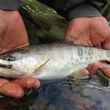
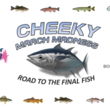





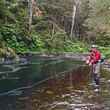
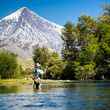



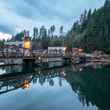
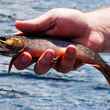




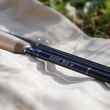



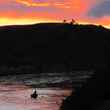
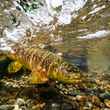


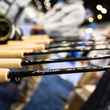
Comments
jack-o replied on Permalink
Nothing can beat fishing in a beautiful mountain stream far from the sounds and smells of urban America. BUT.. there's a certain coolness catching trout in urban settings. Two favorites in Colorado: The Blue River as it flows through the discount shopping district of Silverthorne. The Arkansas tailwater that runs through Pueblo. Good in winter, too. Hot cappuccino is always close by!
Patrick James replied on Permalink
You guys are really something.Educating US your readers on urban fishing like you invented it?I grew up in areas you would be scared to drive thru.Fish of some sort are present even in highly polluted water and we caught them.my best grass carp on a fly rod was close to 50 lbs over 20 years ago.Do you even concieve of anything outside your bubble.We urban kids growing up in the shadows of steel mills used to take the bus to the suburbs to fish golf course ponds etc at the age of 10.later we would ride our bikes 15 miles or more to fish out in the "country".You guys are not the first ,you just assume way to much
Mike Jones replied on Permalink
Damn, who pissed in your Cheerios?
Chad Shmukler replied on Permalink
The author states absolutely nowhere that he or anyone else mentioned were "the first" to fish in urban environments. Everyone knows that fishing in urban environments has been happening since urban environments were created. That doesn't change the fact that urban fishing opportunities are new to and often overlooked by some readers, and those readers can benefit from the information Rob passed along in the above article.
Stephen Hynes replied on Permalink
G'Day from Australia,
I am very fortunate that that I have quite a few nearby streams where I can fish for trout. One flows by the bottom of my garden.
Over the last few summers I've really enjoyed fly fishing for carp in rural and urban spots. As you wrote, fishing is where you find it.
Have you watched some of the videos where Korean anglers fly fish for carp in urban areas?
I enjoyed your article very much. Ignore the negative comments.
Cheers,
Steve
PS Tried to include a photo of the last carp that I caught on a Black Woolly Worm (my favourite wet fly for just about all fish) but it would attach. Is there someway around this?
Steve
Pages